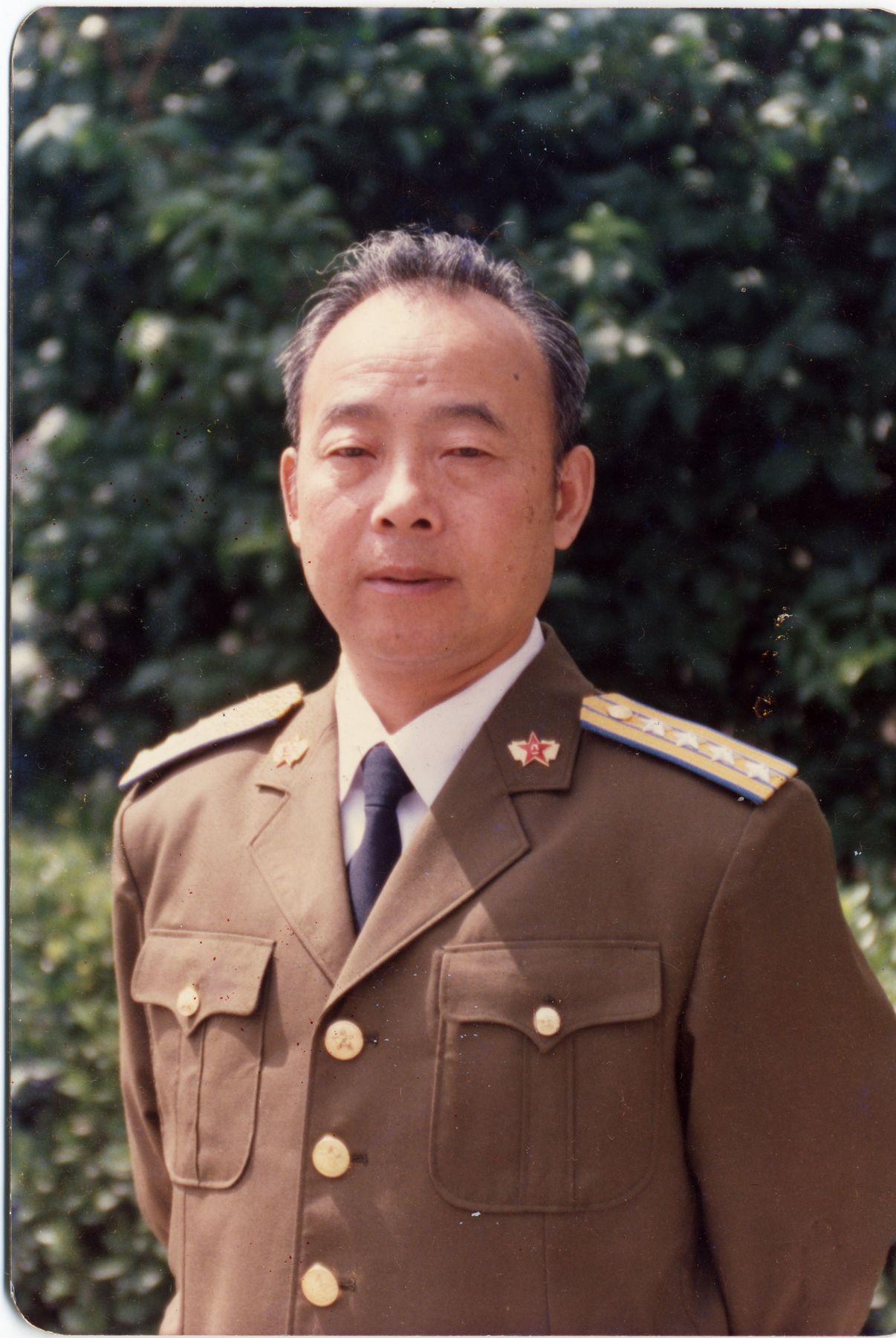Réparer la marmite (补锅) est un opéra de la province du Hunan, dans le style populaire du huāgǔxì (花鼓戏, opéra des fleurs et tambours). Ce type d’opéra est aussi très répandu dans les régions avoisinantes
 Version française
Version française  English version
English version  中文译文
中文译文
Hanggai (en cyrillique Mongol : Хангай) est un groupe chinois d’origine mongole de Pékin, mêlant musique traditionnelle mongole (en langue mongole, Morin khuur, chant diphonique… guitare électrique et punk-rock) dans la lignée du rock alternatif européen des années 80.
Nederland, Drinklied/Pays-bas, Chanson à boire
Concert plus long aux États-Unis:
I was on wikipedia uploading a picture taken in wagang (瓦缸, a big jar) restaurant, I then searched appropriated category on commons for french term “jarre”, and found it was about english term “jar” that is today translated by “bocal” in french. In french jarre is more about big container like chinese wagang or greek phitos, searching to sort and categorize some commons pictures, and found a picture about women trading jarres in Gorom-Gorom market. Gorom-Gorom is a Burkina Faso trade city for nomads of South Sahel (in Burkina Sahel Region. I immediatly think about geotag the picture, using OSM url => {{Location dec}}/{{Object location dec}} wikipedia commons tags.
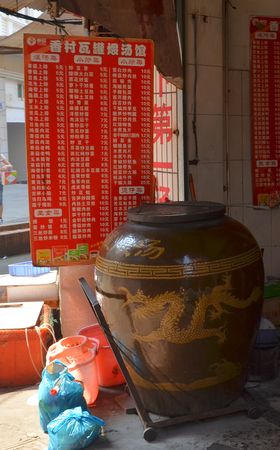
You can simply do this by taking Openstreetmap url in two step :
1. Click on the place you want the geoposition.
2. Click on permalink, you will get an URL like :
* http://www.openstreetmap.org/?lat=14.445&lon=-0.2326&zoom=12&layers=M
3. Extract lat=$lat and lon=$lon values and paste it in :
* {{Location dec|$lat|$lon}}, here : {{Location dec|14.445|-0.2326}}
for camera position, and :
* {{Object location dec|$lat|$lon}}, here : {{Object location dec|14.445|-0.2326}}
for object position.
Well, this was not really precise, no aerial photography of the place, only satellite one. But I moved a little and seen, that now, big parts of Burkina Faso have aerial photography on Bing Imagery layer for Potalatch (the web OSM editor).
I then started to route some roads, street and water pieces. This is unusual to draw tracks in desert for me, that mostly drawn, the 2*2 to 2*5 lanes (+2 sides lanes and footway and bikeways) asphalted streets in China. In this countries all road are one lane for two ways.
Here are some information I noticed, that could help other OSMers to draw thoses areas (Sahel in some poor sub-saharian countries) :
In most of the Burkina Faso, the tag higwhay=track should be avoided, as most road but perhaps 10 national roads are not in asphalt. They should be classified by distance and function. Perhaps trunk for national (only one asphalted), primary for biggest intercity roads, secondary for smaller cities intercity roads, etc…
* In the Sahel region (North East of the Burkina Faso), most roads are only tracks slightly browner or marked by stones along the sides of the road. There is bush areas and pure sand areas.
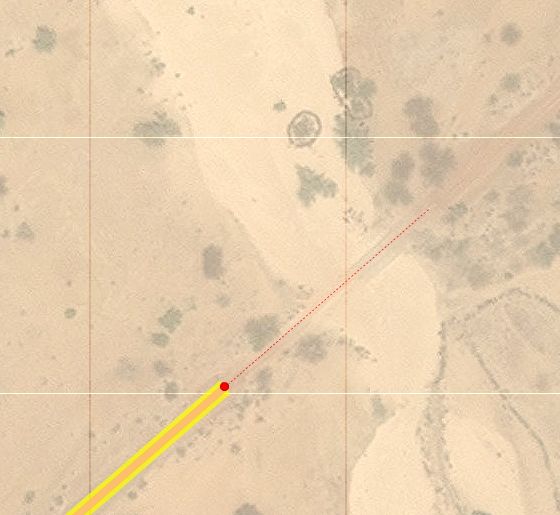
* In the Sahel region, water of the rivers are rarely seen from sky, only a slightly more green area indicate there is water underground.
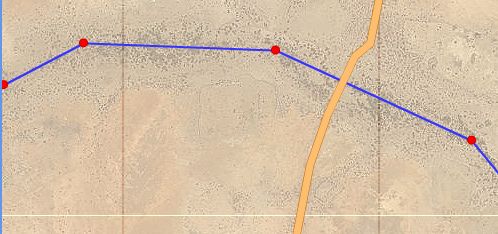
* Markoye, in the far North of the Burkina Sahel Region, as most Burkina small cities in this region, that’s not easy to trace. I question myself to know if that’s better to draw roads on lighter parts of the streets (because of sand moved by feets ?), or to only draw houses, walls and trees, possible ways then appear by themselves. Is there any local code about what is in the family house, and what is outside ? I will probably ask soon to Burkinabe friends.

* For the fun, at Markoye, there is 2 natural lakes, and an artificial water lake, looking like a square Speech balloon (phylactère) lake:
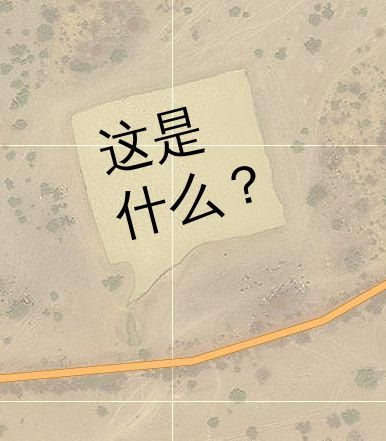
I after that moved in Ouagadougou, the capital, in Centre Region, and its green tropical area, the roads are often destroy by water here, there is big ponds in the middle of the raod, but this is generally more easy to trace :
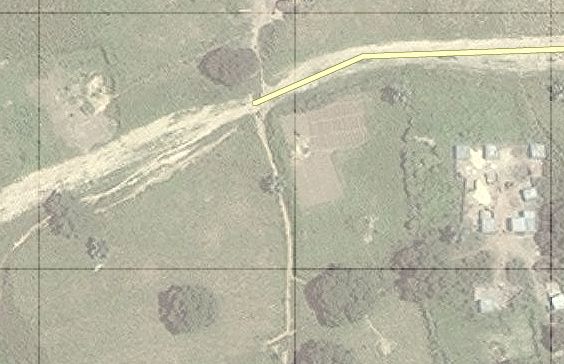
English version
Après un premier article sur WebGL, je reviens dessus pour son utilisation dans des cas concrets.
Fennec, Firefox pour mobile permet déjà d’utiliser WebGL sur Android, de façon expérimentale et qui fonctionne ou plante selon les cas. Pour cela il suffit de taper dans la barre d’adresse : about:config, puis de filtre webgl ou webgl.force-enable, et de passer ce dernier paramètre de
Sous Linux, si vous avez une processeur graphique ATI ou Nvidia avec le pilote propriétaire pas de problème à priori. Si vous avec un processeur graphique Intel, il vous faudra installer Mesa 8.0, fraîchement sorti la semaine dernière afin de pouvoir en bénéficier. sous Ubuntu, le ppa:xorg-edgers/ppa permet de le faire sans trop de difficulté.
Voici une nouvelle liste d’applications intéressantes en WebGL.
* Firefox 11 (bêta) et un greffon pour les version antérieures appelé Tilt permet d’avoir une visualisation en 3d de la structure des pages web, permettant ainsi d’accroître l’ergonomie de la visualisation pour les webmestres.
Pyppet – WebGL Streaming blender< =>WebGL permet de visualiser en temps réel dans un navigateur web, un rendu WebGL, d’une scène en cours de modélisation dans Blender.
minifier de fichier GLSL permet de compresser un script GLSL et ainsi de rendre les applications WebGL utilisant GLSL plus rapide à charger et moins coûteuses en bande passante.
Je prévoyais un avenir flamboyant de WebGL dans des encyclopédies du type Wikipedia, Google, commence assez fort dans ce domaine avec ZygotBody, permettant de visualiser les différentes couches de l’anatomie d’un corps humain en 3D, et plus généralement Google Open-3d-viewer, permettant également de le faire sur une vache. Le code de l’application est disponible ici : open-3d-viewer Project page.
Une démonstration de réalité augmentée via firefox.
Seriously.js, du compositing en temps réel sur une vidéo.
Cloudmach est une plate-forme en ‘nuage’ de jeux WebGL.
Une petite démo sympa : lights.elliegoulding.com
Un petit casse-tête sympa : Crazy bugs
.
Utilisation de WebGL pour le rendu vectoriel + bitmap 2d et ainsi bénéficier de la rapidité et économie d’énergie de l’accélération matérielle dans les applications interactives : WebGL Fundamentals (WebGL is a 2D API!)




